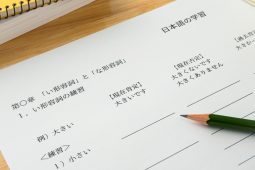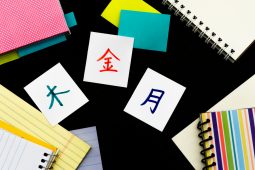Despite its critics, and some alternatives, the JLPT is still a major milestone for most Japanese learners. Companies often require a certain level when hiring non-Japanese employees, schools use it for admissions, and lots of non-Japanese just like to brag about their own level. Thus, it’s a pretty good bet that most of the people reading these education articles are grappling with the JLPT at some level.
The good news is that there is essentially an entire industry devoted to getting people past the 5 levels of this test. There are books, videos, apps, websites, online lessons… The list goes on. Whatever your personal learning style, there is sure to be some kind of material out there geared to it. All you have to do is find it, and get to studying!
The bad news is that you do have to study. There are no magic wands that will suddenly make all those kanji and vocabulary words appear in your brain. If you want to pass JPLT N1, you’re going to have to memorize those 2,000 joyo kanji, and learn roughly 4,000 vocabulary terms. The key, then, is finding ways to manage that study and keep at it until you put this goal behind you, and move on to your next!
General Study Tips
The JLPT tests are all cut into sections, but they differ according to level. Levels N5-N3 including a vocabulary section, a grammar section, and a listening section. N2-N1 combing the vocabulary and grammar, along with reading, into one large section, with a longer listening section than N5-N3. All of the times for each section differ by level. Thus, in broad terms, you’ll want to focus on study that covers a wide range of sections.
The first base to build is vocabulary. Building as big a vocabulary store as you can will pay off in better reading and listening comprehension, and thus help support those sections as well. Knowing words before you learn the kanji for them is an excellent starting point for the next step: kanji.
Learning kanji is not easy, unless your native language uses a similar system (like the various Chinese dialects), you’re going to struggle at first. But, like I mentioned earlier, one way to help yourself is to have as wide a base of vocabulary as possible so that learning the kanji means you can say “Ahh, 愛 is just another way to write あい/ai, or love! I know that word!” instead of learning the kanji, reading, and meaning all at the same time.
Remember that learning kanji is essential, but it’s the one part of this process that is only reading-focused. Learning kanji won’t directly help your listening (except in the sense of reinforcing vocabulary), nor will it help your grammar.
One very important thing to remember is that when you take the JLPT, there will be questions specifically about the reading of kanji, meaning the pronunciation. Many people connect this with the study of kanji, but again, I would argue this is a vocabulary issue, because the reading of a kanji in a specific term (onyomi or kunyomi) is often controlled by rules so complex and ridden with exceptions that they’re effectively useless as a study tool. Meaning, you will likely NOT be able to predict the reading of a term unless you already know it as a vocabulary word. Do you see what I’m getting at? Knowing the vocabulary as a base, as in remembering the reading and meaning first, means you can just apply the kanji to your vocabulary knowledge.
I would put grammar lower in priority than vocabulary and kanji, if only because studying vocabulary will help you with a lot of grammar in Japanese. Rather than dealing with massive verb inflection charts like you get in European languages, grammar in Japanese is often term based rather than inflection based. Thus, grammar is as much about vocabulary as it is about structure. I don’t mean you shouldn’t study grammar, but in test-taking terms, focusing on vocabulary and kanji will take you a long way overall, so their priorities are higher.
And finally, the single, most effective way to practice grammar, vocabulary, and kanji all at once is reading real, natural Japanese with a focus on learning. Nowadays there are all kinds of tools specifically for this purpose. Read, read a lot, and practice.
Useful Materials
Now that you have some basic approaches, here are some tools I think are useful in making them work. Take a look and think about the best way to choose your tool!
The Kanji Code
This book focuses on the radical structure of kanji to help predict the reading of kanji. It’s a novel approach, and one that can be very useful specifically for these types of questions on the JLPT.
Tangorisuto — App(shut down in May 2020)
This app has news stories in Japanese analyzed down to the vocabulary level. It highlights phrases and words using different colors based on the JLPT level, making this excellent for reading practice and study. Reading is not only a major part of the test, but also general language skills.
Remembering the Kanji
This is a classic textbook geared specifically at understanding kanji, without focusing on reading, thus making it a good companion for The Kanji Code.
Tae Kim’s Grammar Guide
This is a book and website that looks specifically at grammatical structure, and it’s free! You can follow the study inside to get a very solid grounding in a wide range of Japanese sentence grammar.
Graded Readers
Graded readers are available from all kinds of makers, and are based on increasing levels of difficulty to help reading skills grow naturally. They are mostly low level, since advanced learners can depend on natural sources, but are definitely worth a look.
In Conclusion
Focusing on vocabulary and reading is always a good idea, and with some intentional study it can be an enormous boost on the JLPT. Happy studying!








